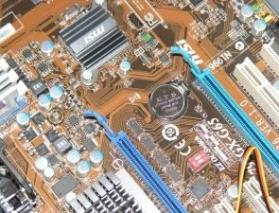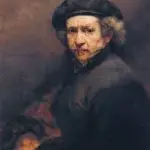
*ca 1650. In public domain.
Ever since I was a kid in the 1970s, I have been drawn to various symbols as sources of inspiration. I would spend hours on my living room floor, meticulously working with pencil and crayon to reproduce the “S” insignia on Superman’s chest or the Starfleet Delta from “Star Trek.” At the time, I probably could not have articulated what they meant to me or why I felt it so important to make sure they were perfect; just the right colors and shading, just the right angles. If they weren’t perfect enough, they would never make it up on my bedroom wall. Once they were perfect, I could hang them with pride, look at them every day, and allow their magic to seep into my soul and help me to get through each day.
Symbols can remind us of the values that we work to uphold and help us to resist the distractions and temptations that every day attempt to challenge those values. We wish to be virtuous at all times and in all situations, but so long as we have physical bodies subject to all of the desires and hungers that accompany that truth, we will never be perfectly virtuous. Sometimes, the temptations win. Fortunately, philosophy enables us to hit the reset button the next day…or next moment…and promise ourselves that we will work to do better. Symbols can help us with that.
In the late 1970’s, a few years after the “S” and Delta drawing days, I started collecting action figures; “Star Wars” had just been released, and when I first saw its action figures in a K-Mart store, I grabbed one of each different character on the rack and ran across the store to throw them in the shopping cart my mom was pushing, breathless with ecstasy. Having really no concept of the financial aspect of what was involved in purchasing twenty action figures at once, I felt my heart drop into my stomach when my mother informed me that I could only have two of them. How to choose two? Well, there was nothing for it. Two it would be. Luke Skywalker and Darth Vader made the cut. The rest would, methodically, join the ever-growing collection.
Despite what you might see if you watch advertisements for such “toys” from the late 70’s, I didn’t so much “play” with the figures I collected. I lined them up on the top of a bookshelf when I wanted them displayed, and to store them I typed their names on sticky address labels and put those stickers on the fronts of little plastic drawers that fit in an old nail and screw organizer my dad no longer used. Each figure then got a drawer. They sold commercial “collector’s cases” for them, but the cases didn’t hold enough of them, and cost a lot themselves. So, when my dad donated his old, beat up organizer with enough drawers to hold every figure I had with room for more to come, it meant the galaxy to me.
The figures were symbols that I held, admired, gently posed, and let inspire me–as if the nobility and heroism of the characters they represented could seep into my hands, move up my arms, and become a part of my soul too. In ancient Rome, small terra cotta figures known as “lares” were placed in windowsills and specially designated shrines, serving as physical manifestations of the household gods which the family living in the home would revere. The lares protected the home and the family within it. My action figures were well armed, but I’m not sure if they would have offered much protection from a genuine threat. All the same, they sustained my imagination and inspired me with every glance.
The years passed, the action figures ended up in a shoe box in the closet (save for Yoda; he’s on display to this day), and my symbol reverence matured along with me. As I moved through high school, the symbols became academic and athletic. My blue and gray high school letter jacket, the gray varsity “P” sewed to the front left chest by my mom, was worn on a daily basis. I took great pride in displaying not only the colors of my school (especially when we visited our rival communities) but the Pullman “P” which I had earned through no small amount of physical effort. The letter I still have, though the jacket found its way back to my high school, donated to a program that supplied letter jackets to students who could otherwise not afford them. I’m proud to know there is a Greyhound out there who may be still wearing it with pride.
The jacket and letter were symbols of home and accomplishment to me. Letter jackets are making something of a comeback in the high school where I teach, but one school related symbol I just don’t see anymore is one I treasured more than any other–my class ring. It’s silver with a dark blue stone, the varsity “P” symbol engraved in the top of the gemstone itself. It has a football helmet on one side with “C-50” engraved above it (“C” for “Center,” my position on the team, with 50 being my number). A running dog with the word “Greyhounds” engraved above it is on the other side. A tiny “ ‘87” is at the bottom of one side to mark my graduation year. I wore that ring every day from the time I received it as a sophomore, and to this day I still take it out on occasion just to relive old memories and remember how much I learned from playing the sport of football, and how much I miss my hometown, which still means a lot to me though destiny has drawn me far away.
I have a college class ring as well from Washington State University which I wear almost every day. Emblazoned with a book and quill pen representing my major in English, and a relief of Bryan Tower, a campus landmark, the ring represents my years of academic effort and the accomplishment of earning the degree that has made my career possible. It reminds me daily of what I am meant to do, and of the place that prepared me to do it.
When I left Pullman behind, I took a small piece of it with me. In a small vase that once held a votive candle, I have some soil, a piece of basalt rock, and two small stalks of wheat. That little vase sits on my desk as a physical symbol of the land where I was raised and nurtured during my formative years. It reminds me of my heritage, and how important the “home of my soul” remains to me.
Today, the symbols of greatest value to me are deeply spiritual ones that serve to keep me focused on what I most value. I practice Stoicism, my life guided by the four cardinal Stoic virtues: wisdom, courage, justice, and temperance. Each day, I carry in my pocket a specially crafted medallion that serves as a tangible reminder of the values that I seek to practice. There are eight of them, each bearing an image and a Stoic maxim:
- The four cardinal virtues, represented by an owl (wisdom), a lion (courage), a scale (justice), and a figure pouring water into a wine amphora (temperance)
- “Memento Mori”: The medallion bears a skull, a lily, and an hourglass, symbols of death, life, and time, reminding us that our time here on Earth is limited and we must make the most of every moment.
- “Amor Fati”: A Latin phrase meaning “Love your Fate.” We must embrace the events that happen in our lives and use them to fuel us going forward.
- “Summum Bonum”: Virtue is the greatest good; as long as we do the right thing, the rest doesn’t matter.
- “Premeditatio Malorum”: The premeditation of evils. If we spend some time each day visualizing the loss of that which we most value, we will learn to appreciate it more while we have it, and have no regrets when we lose it (or them).
- “Ego is the Enemy”: We must be careful to make sure our egos don’t get inflated and that we remain humble.
- “The Obstacle is the Way”: We must seek challenges and obstacles in our lives so that we can grow stronger. The medallion bears the words of Marcus Aurelius: “The impediment to action advances action; what stands in the way becomes the way.”
- “Sympatheia”: We must remember that we are here to help one another and were made to do so. This is the one I usually carry to my work each day as an educator, working with the young people I have the good fortune to teach. We are all working together toward common goals.
These medallions are carried at different times to help me center my thoughts on the task or challenge of the moment; I am never without one of them. If I am working on something rigorous, “The Obstacle is the Way” is the medallion of choice. When I work with others, “Sympatheia” is in my pocket. If I feel I might face temptation to do something that is not in my best interest or does not conform to the Stoic path, “Summum Bonum” is carried to remind me to do what is right. The medallions don’t sit on a shelf; they are handled and meditated on daily to keep me focused. Their presence keeps my values at the forefront of my mind and helps me to stay true to the rigorous path of Stoic virtue. Others wear symbols of their faiths, such as crosses, the Star of David, or other symbols on rings, necklaces, even T-shirts; the sentiment is the same. If anyone is interested in obtaining one or more of the aforementioned medallions, they would be available from the Daily Stoic website store at dailystoic.com.
My newest symbol collection has only just begun, and will take years to complete: bronzed, resin statues of mythological and mytho-historical figures. The first two statues I obtained were of Cuchulainn, the hero of the Irish epic “The Tain.” A larger version of the statue can be seen in the lobby of the Dublin, Ireland post office. The figure is largely seen as a symbol of the quest for Irish independence. For me, the statue represents the values of taking a heroic stand in the face of insurmountable odds. The statue shows the hero near death, having tied himself to a standing stone so that he can meet his oncoming enemies on his feet, even if he is no longer able to stand on his own. It sits on my nightstand, serving as the first thing I see in the morning and last thing I see at night, reminding me to meet anything that opposes me on my feet.
Next to Cuchulainn stands a statue of Sisyphus from Greek mythology, pushing a great boulder up a mountain in the underworld. When I face a deadline and a mountain of work stands before me, I put Sisyphus on the desk or table before me to remind me to keep “pushing the rock,” as it is the obstacle or challenge presented by that work that is making me stronger. The “Obstacle is the Way” medallion depicts a mountain with a path leading to its summit; I imagine that is the same path Sisyphus is following as he pushes the boulder. His task is a punishment for a life poorly lived; ours is an obligation: we need to seek out great challenges, and if we get the “rock” to the top of the mountain, we need to immediately look for the next one so that we are never without an obstacle. When the challenges end, we stagnate and become unproductive consumers of resources, not contributing citizens to the betterment of society.
Now, there is the argument that we shouldn’t need external symbols to remind us of what we value, that we should just live those values and not depend on external stimuli. Certainly the ancient Stoics would say that the events external to us are not things that we can control, and objects external to us should not be over-valued, as we could lose them tomorrow, and cannot take them with us. Points taken.
However, while we are still alive and possess human bodies, we will constantly be subject to the cravings those bodies impose upon us: hunger, thirst, desire, and many others. No one is perfectly virtuous, all the time. Such an individual would be referred to by the ancients as “the sage,” who is a hypothetical figure who can never be tempted away from the virtuous path for even an instant. None of us are that strong, so surrounding ourselves with physical reminders of that which we value can serve as one more defense against the forces that would lead us astray. If it motivates you, if it inspires you, if it helps keep you focused on what you believe in and helps you defend your beliefs, then don’t be afraid to carry it with you, put it on your desk, or display it on your wall or on a shelf. We need all the help we can get today to keep us centered on what really matters to us and what we value; tangible symbols are just one reinforcing means of defense from today’s ever-present anxieties and instruments of hopelessness. Gather the symbols of meaning to you close by, and keep pushing the rock.

















